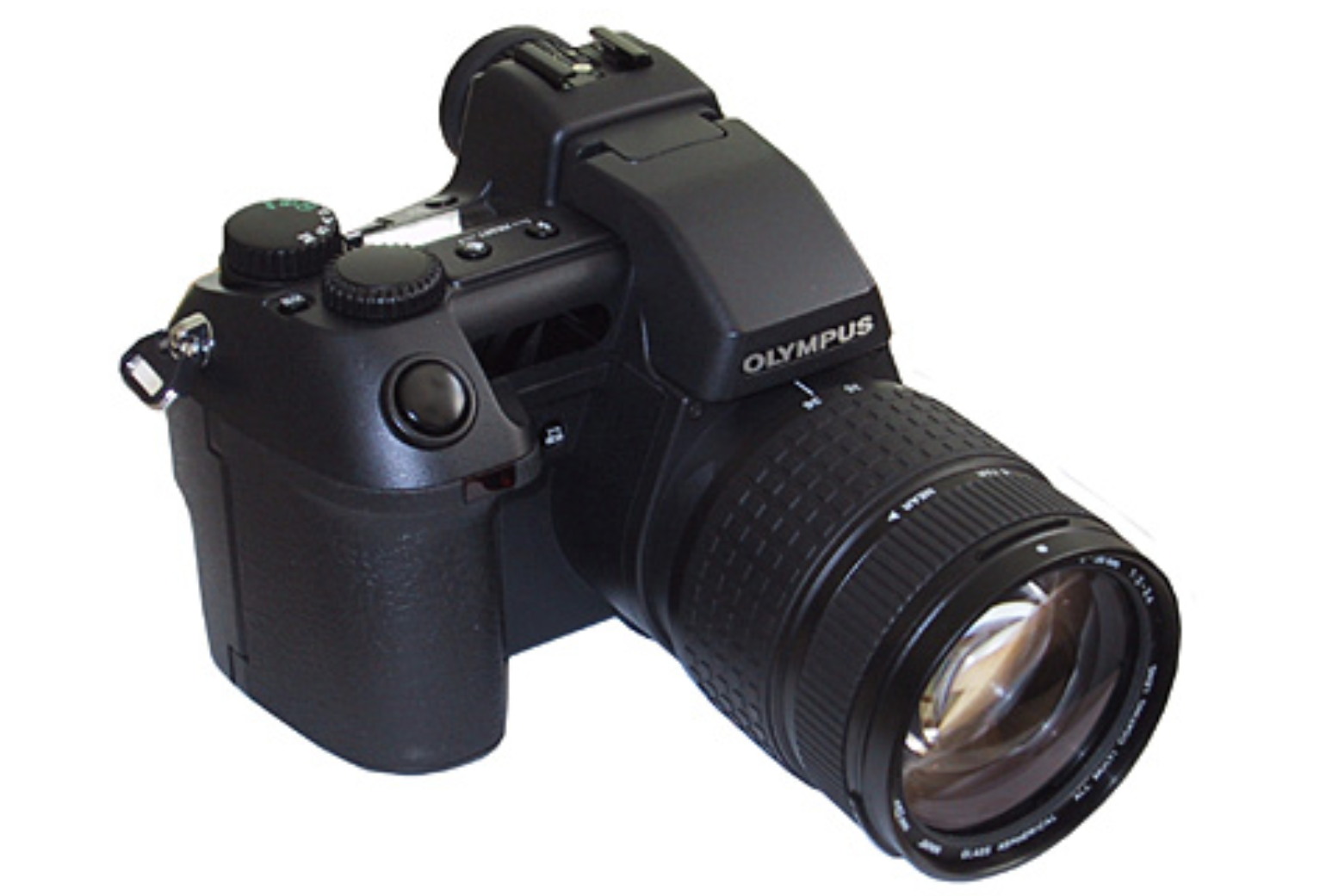Olympus Camedia E-10: Almost-Pro SLR, for a Price

Digital cameras are about as hard to find as Honda Civics these days, but pickings are still slim when it comes to models geared for professional use. With its Camedia E-10, Olympus has joined the ranks of Canon, Nikon, and Fuji by offering a digital SLR aimed squarely at the semi-professional to professional user. The asking price? The E-10 sells for about $1,999, putting it at the low end of digital SLRs meant for professional use.
The E-10 boasts features not seen on any other digital camera. First, there’s the 4-megapixel CCD — a higher-resolution sensor than any other SLR (Fuji’s 6-megapixel FinePix S1 Pro depends on a 3.4-megapixel sensor). Next, there’s the camera’s unique design, which lets you use its LCD as a viewfinder, despite the camera’s SLR approach. Finally, there is the E-10’s fast, 4x lens, which Olympus engineered specifically for the camera’s sensor.
The biggest drawback of this camera for professional users may be another aspect of the E-10’s lens: The lens is fixed to the camera in a sealed design, though Olympus sells extensions that can provide some additional flexibility.
Built to Last
The Camedia E-10 follows the design of a 35mm SLR, but Olympus has eliminated the left side of the camera (where the film roll would normally sit). The ride side of the camera is a typical molded, L-shaped grip with shutter button and mode controls cleverly arrayed around the grip. Just as with a normal SLR, your left hand supports the lens, and the E-10 includes a real mechanical zoom ring as well as a focus-by-wire manual focus ring.

The Camedia E-10 resembles a conventional SLR but uses a fixed, 4x lens. The lens boasts manual zoom and focus rings.
The camera’s all-metal body is solidly constructed and feels very well made and comfortable to hold. Of course the metal body also ups the E-10’s weight, to almost 2.5 pounds.

Most E-10 settings are available without resorting to a menu system, by holding a control button while turning a dial to cycle through the available setting values.
A flip-up flash just behind the lens provides internal flash capability at distances up to 18 feet. The Camedia also provides a hot shoe and PC flash sync connection.
In addition to the camera’s 32MB of internal memory, Olympus provides a 32MB SmartMedia card with the E-10, but the camera’s dual memory slots support both CompactFlash (Type I/II) and SmartMedia cards.
Lens Pros, Cons
The E-10’s fixed lens is a 4x zoom with a 35mm equivalent range of 35 to 140mm. In a touch every serious photographer should love, the E-10’s lens is very fast, offering an f2 aperture at its widest angle and f2.4 at its most telephoto. Its most exciting features, though, are the manual zoom and focus rings, which serve to make the E-10 comfortable and easy to handle. The camera’s zoom ring is a true mechanical zoom with a nice heavy drag for precise zooming. The focus ring is a “focus-by-wire” control, like those found on many autofocus SLR lenses: Turn the ring, and the camera electronically adjusts the lens’ focus.
It may seem strange for a company to make a professional-grade camera with a fixed lens. Olympus cites several reasons for this choice. First, cameras with interchangeable lenses are notorious for their dust problems. Because the typical digital camera image sensor is so small, it takes only a tiny mote of dust to produce a black smear or blotch in an image. And, unfortunately, most manufacturers do not condone the use of compressed air for cleaning CCDs. Dust, therefore, can become a problem if you regularly change lenses.
Olympus also claims that because it engineered this lens specifically for the size of the E-10’s sensor, the lens delivers much better performance than a lens you would attach to a normal digital SLR. Because stock lenses are designed for 35mm film size, they don’t necessarily focus as clear an image as a lens designed for the size of a digital camera’s image sensor.
Olympus sells four high-quality extension lenses for the camera, which screw into the camera’s 62mm threaded lens. One extension provides 1:5 macro capability. The other three extensions give lens lengths (using 35mm equivalence) of 28mm, 200mm, and 420mm.

The E-10’s impressive lens makes artifacts such as geometric distortions and purple fringing almost impossible to find.
(Click here to see the original, full-size image.)
This article was last modified on January 18, 2023
This article was first published on May 23, 2001




